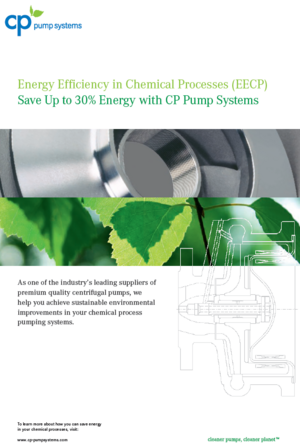Energy recovery and energy efficiency have both become major strategic issues in many industries. Recognising its importance and the widely shared consensus that climate change is man-made, a large number of companies have started to do something about it. Both energy recovery and energy efficiency help to make European industry more competitive, so now many businesses across Europe are endeavouring to:
- reduce their carbon footprint;
- save on CO2 emission certificates;
- spend less money on energy.
Technically, energy can neither be lost, nor can it be recovered. Energy can only be converted from one form to another, such as thermal energy, mechanical energy, kinetic energy, potential energy, etc.
Water storage plants vs. chemical process plants
In chemical plants, potential energy is solely created to produce chemicals – but never to store energy. Drive energy used to transport fluids is converted into either potential energy or heat (pipe friction losses). In chemical plants, heat can be “recovered”, but potential energy cannot – because it would not be produced:
Water storage plants: at night, when energy is not needed, it is used to pump water into water storage reservoirs. During the day, when power is needed, the water is used to generate electricity. Potential energy is created as a means of storing energy: a Pump as a Turbine (PaT) can be an option to recover potential energy.
Chemical process plants: energy is consumed when needed to pump chemical liquids. Otherwise, they could not be pumped at all. Potential energy is required in chemical processes for many reasons, but never to store energy: a Pump as a Turbine (PaT) cannot be an option to recover potential energy.
Safety vs. energy efficiency
In chemical process pump systems, safety is vital when pumping hazardous fluids:
Safety: chemical manufacturing processes require maximum reliability of each piece of equipment. Processes for treating liquids such as bromine, phosgene, TDI, MDI or chlorine often require pump systems fitted with monitoring and/or protection devices. Legal requirements are not only rigorous, but often specifically defined for each process and each fluid (ATEX Directive, etc.).
Energy efficiency: if safety is assured, energy consumption in chemical processes can be optimised. Environmental challenges can best be met by using clean and energy efficient technologies. Chemical companies gain considerable competitive advantages if they use energy efficient pumps in their processes. Efficiency requirements are not only rigorous, but generally depend on each pump technology and each pump material required (magnetic drive pumps, etc.).
Complexity of chemicals
To optimise both safety and efficiency, the complexity of pumping chemicals requires smart engineering because fluid handling in the chemical industry is a complex process with many facets to be considered:
- The huge variety of different fluids, such as acids, alkalis, solvents, slurries, etc. requires expertise about which technology and which material are best suited to each fluid.
- Each fluid is either highly corrosive, abrasive, toxic, explosive, hazardous, dangerous or all of these together.
- Each fluid may contain gas and smaller or larger amounts of solids, has varying temperatures, densities and viscosities, may crystallise under certain conditions or all of these together.
- In chemical pumping processes, leakage may result in severe environmental harm and human fatalities and has to be avoided at all costs – without compromising on energy efficiency.
Each fluid needs the right selection of technology, material, impeller, containment shell, motor, VSD control and pump, as well as system planning.
System approach has largest energy efficiency potential
Each fluid has different implications for the safety and energy efficiency of the final process. The savings potential increases the more system components are taken into consideration:
Product approach: engineering solely focused on the pump can save up to 5%:
- pump impeller selection: trimmed impellers vs. standardised impellers;
- pump containment shell selection: zero losses vs. eddy current losses.
Extended product approach: engineering also focused around the pump can save up to 10%:
- electric motor selection: IE2 motors vs. IE3 motors or IE4 motors;
- VSD control: valve throttling vs. speed variation (to operate different duty points).
System approach: engineering focused on the entire system can save up to 20%:
- system planning: optimal designs, flows, heads, piping diameters, etc.;
- pump selection: optimal technologies, materials, sizes, couplings, protection, etc.
Conclusion
Smart engineering of pump systems in chemical processes is an opportunity for energy efficiency:
- In chemical process pump systems, energy recovery can be replaced with energy efficiency – chemical plants are better off saving energy in the first place than recovering it.
- Both safety and energy efficiency are of crucial importance in the chemical industry – they need to be understood as two complementary characteristics, and not as being mutually exclusive. Chemical manufacturers do not have to compromise on energy efficiency to meet their stringent quality requirements = safety.
- Smart engineering of chemical processes means taking into account all aspects and technical intricacies of the specific fluids to be handled and offering solutions for optimal pump technology, pump material, pump size, pump coupling, pump protection, etc.
by Thomas Würsch, CP Pumpen AG



















